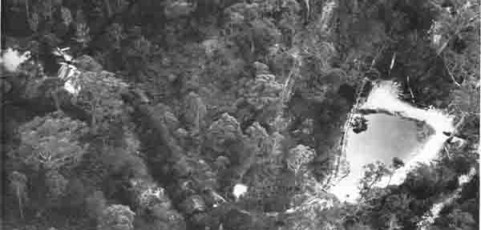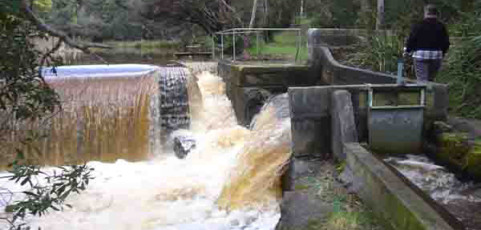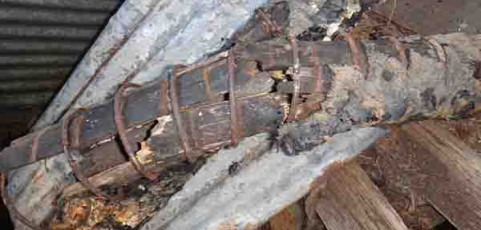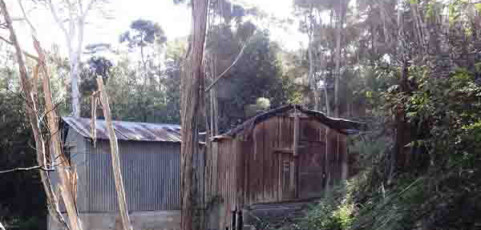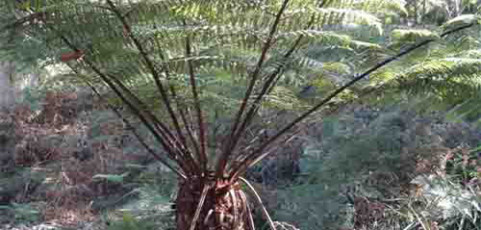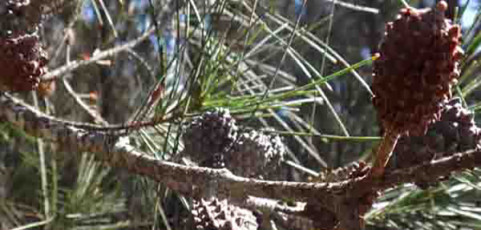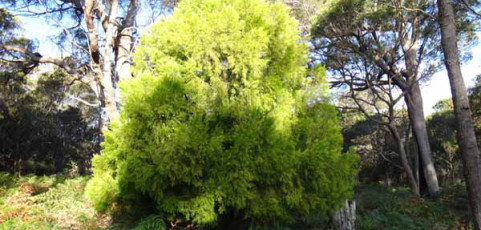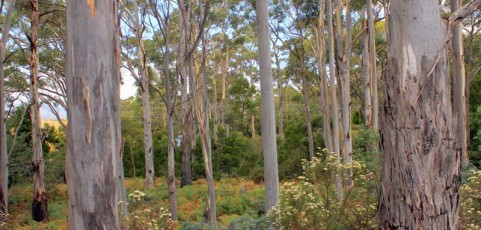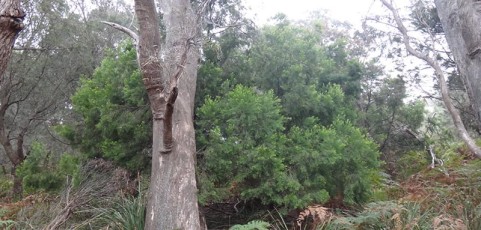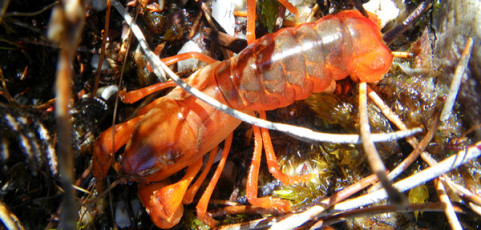In 1962 the settling pond was dug just a few hundred metres downstream from the weir. The water was diverted before it travelled down the race to the fish farm. The gravel and sand would drop to the bottom and the water was reasonably clear. A screen was installed to catch rubbish to stop it going down the race.
Weir and Water Supply System
Originally the water was pumped some 3000 ft or around 900 metres to the reservoir at the top of the town with no running costs. The reservoir is about 270 feet or about 80 metres above the river. The scheme covered an area from just south of the river along to the old pier. It also included taps along the foreshore, the recreation ground, (village green) and the public hall.
Water Supply Pipes
The pipes that carried the water were constructed of wood staves, wrapped in heavy gauge steel coil, and then covered in creosote soaked canvas. Throughout the 1920s, local residents had agitated for an up to date water supply and holiday makers had long complained about poor facilities. Water had been a scarce commodity in Bridport particularly during summer. Tanks would often run dry and water was carted from above the tidal flow further...
Pump House
By the early 1950s it gradually became clear that Bridport’s water supply system needed upgrading as the town continued to grow. The pump was often broken down and many attempts were made to repair it. Water supplies were inconsistent and not able to deal with growing demand. A new motor was installed in 1952 with only limited success. By the 1960’s a new pump house was installed near the Elizabeth street entrance. This is still...
Spiky Tree Fern
The hardy and adaptable Cyathea australis or Spiky tree fern is found at Tree Fern Gully on the River-Forest section of the circuit. It has roots and hair like follicles on its trunk giving it a rough texture and it is adaptable to a variety of climates and soils. Ferns are also amongst the oldest plants in the world dating back to the Carboniferous period 360 million years ago and the Spiky Tree fern is wholly protected in...
Sheoak closeup
The She-oak ( Allocasuarina littoralis ) ‘closed’ forests are remarkably quiet. It is the most drought resistant tree in Tasmania. The needle like foliage is a dull dark grey. The fallen needles create a soft cushioning mat.
The Native Cherry
The Native Cherry (Exocarpus cupressiformis) tree is a semi-parasitic plant. It attaches to the roots of the dominant black peppermint eucalypt trees around it. It is an attractive conical shaped tree with bright green dense foliage.
White gum
White gum ( Eucalyptus viminalis), are dominant on the river reserve near the Ada Street shelter. Alongside the river there are moisture-loving herbs, ferns, sedges, rushes and reeds. Paperbark swamplands occur where the Brid River flows into Anderson Bay. A riparian corridor with dense plantings of a range of small native trees and shrubs is important to the restoration of the Riparian reserve. Riparian revegetation practices helps stabilise...
Black Peppermint
The Black Peppermint ( Eucalyptus amygdalina) is endemic to Tasmania and a dominant tree on the River-Forest track. It is known for its rough bark and narrow peppermint scented leaves when crushed.
Burrowing Crayfish
The swampy low lying areas of the River-Forest track provide the perfect habitat for the tiny and vulnerable Burrowing Crayfish ( Engaeus genera).

